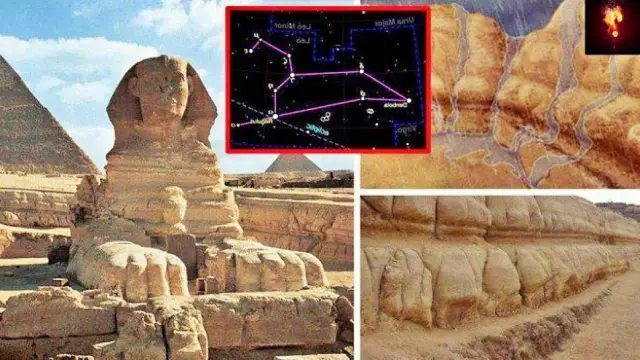The Great Sphinx of Giza
The Great Sphinx of Giza is one of the most iconic monuments in the world. It has stood for thousands of years, captivating visitors with its grandeur. Among the many theories about its origin, one stands out: the Sphinx Water Erosion Hypothesis. This theory suggests that ancient floods or heavy rainfall shaped the Sphinx and its surrounding walls. Some even claim that it was built by the lost civilization of Atlantis over 11,500 years ago. But how credible is this theory? Let’s explore the details.
What is the Sphinx Water Erosion Hypothesis?
The Sphinx Water Erosion Hypothesis proposes that the erosion patterns on the Sphinx were caused by water, not just wind and sand. Proponents argue that significant rainfall or flooding in ancient times could have sculpted the stone. This idea challenges the traditional view that the Sphinx was primarily shaped by natural weathering over the millennia.
The Atlantis Connection
Some supporters of this hypothesis link the Sphinx to Plato’s lost civilization of Atlantis. They suggest that this advanced society existed over 11,500 years ago and was responsible for constructing the Sphinx. However, this claim is highly controversial and lacks solid archaeological evidence. Most historians regard it as speculative.
Erosion Patterns: A Closer Look
Critics of the water erosion theory point out inconsistencies in the erosion patterns. For instance, the southern enclosure wall of the Sphinx should show minimal signs of water runoff erosion. Instead, water would naturally flow to the south and southeast, away from the Sphinx. This observation raises questions about the validity of the water erosion hypothesis.
Alternative Explanations for Erosion
Some researchers propose that the erosion was caused by channeling runoff water from a large section of the Giza plateau. They argue that the orientation of the nearby pyramid quarries created a natural gutter. During heavy rainstorms, this gutter could direct water toward the Sphinx, leading to the observed erosion. This explanation aligns more closely with the geological features of the area.
Dating the Sphinx: A Timeline of Theories
The conventional belief is that the Sphinx was built around 2500 B.C., during the reign of Pharaoh Khafre. This dating is based on historical records and archaeological findings. However, some recent studies suggest that the Sphinx may be much older, possibly dating back to 7000 B.C. This new timeline raises further questions about the Sphinx’s origins and the environmental conditions of that era.
The Role of Climate Change
Understanding the climate of ancient Egypt is crucial to evaluating the Sphinx Water Erosion Hypothesis. During the time when the Sphinx was supposedly built, the region experienced different climatic conditions. Some researchers believe that the area was once much wetter, with more rainfall than it receives today. This change in climate could support the idea that water erosion played a significant role in shaping the Sphinx.
Scientific Studies and Findings
Several scientific studies have examined the erosion patterns on the Sphinx. Geologists have analyzed the stone and the surrounding area to determine the causes of erosion. Their findings often highlight the impact of wind and sand, which are the primary erosive forces in desert environments. However, some studies have also noted signs of water erosion, adding complexity to the debate.
The Debate Continues
The Sphinx Water Erosion Hypothesis remains a topic of heated debate among scholars. While some support the idea of ancient floods shaping the monument, others argue that the evidence does not support this claim. The lack of consensus highlights the need for further research and exploration.
Conclusion: What Lies Beneath the Sphinx?
The Great Sphinx of Giza continues to be a source of fascination and mystery. The Sphinx Water Erosion Hypothesis offers an intriguing perspective on its origins, but it is essential to approach this theory with caution. As new studies emerge and our understanding of ancient Egypt evolves, we may uncover more about this iconic monument.
Final Thoughts: The Quest for Knowledge
As we seek to understand the past, the Sphinx remains a symbol of human curiosity. What do you think? Could water erosion have shaped this ancient wonder? Or is it merely a product of time and nature? The quest for answers continues, and each discovery brings us closer to unraveling the mysteries of the Sphinx. Stay tuned for more insights into this captivating topic!

